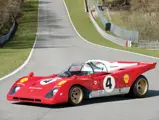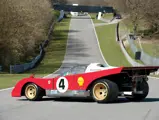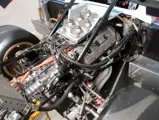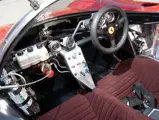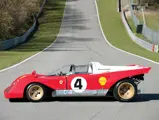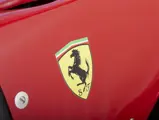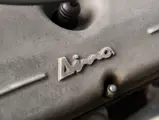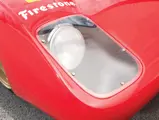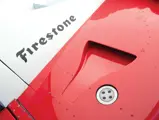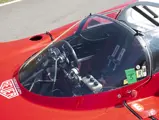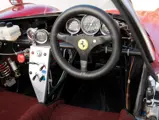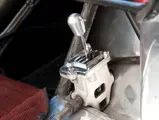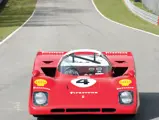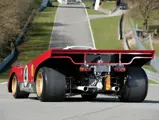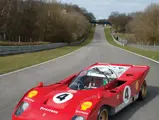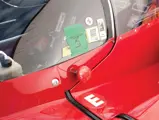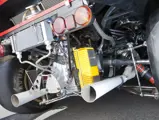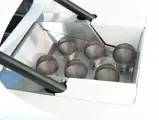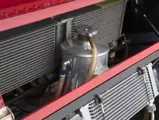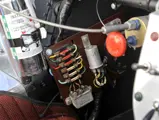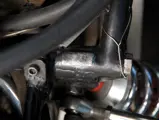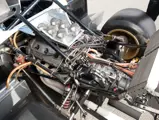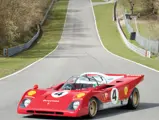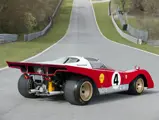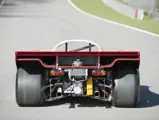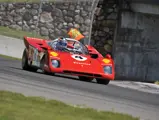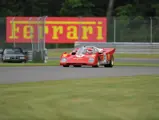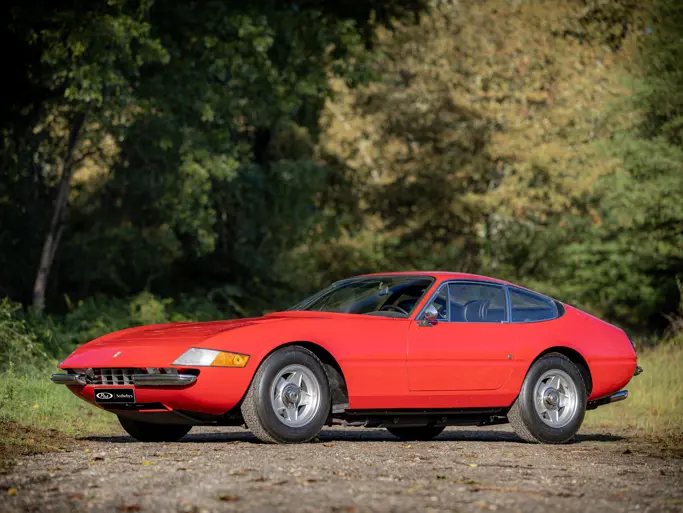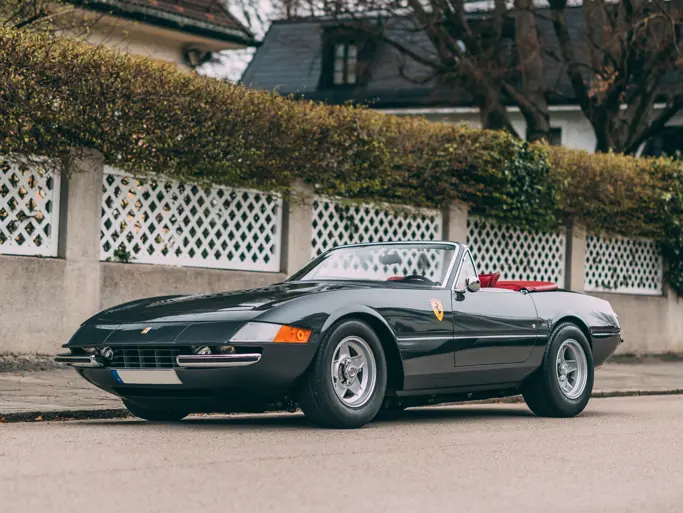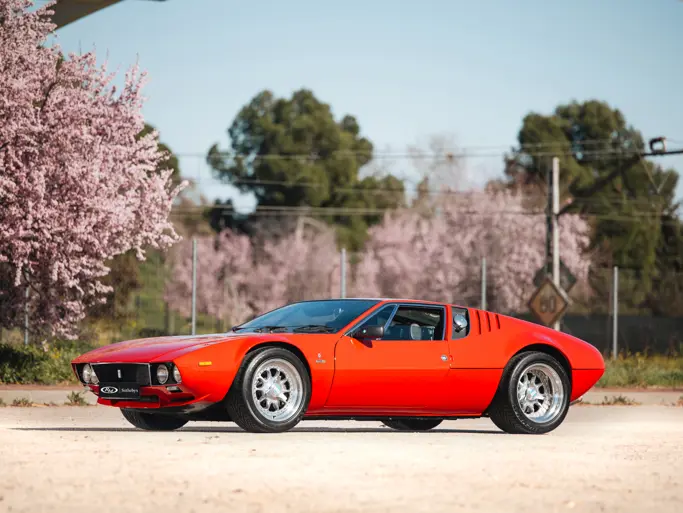Monaco 2014
1967 Ferrari Dino 206 S Spider
{{lr.item.text}}
€2,072,000 EUR | Sold
 | Monte Carlo, Monaco
| Monte Carlo, Monaco
{{internetCurrentBid}}
{{internetTimeLeft}}

- Single ownership since 1977; never been offered for public sale
- Extensive period race history, with numerous 1st place finishes
- FCA National Concours and Cavallino Classic Platinum Award winner
- One of only 18 examples ever produced
- Un seul propriétaire depuis 1977 ; jamais proposée en vente publique
- Riche historique en compétition ; très nombreuse victoires
- Prix au FCA National Concours et Cavallino Classic Platinum Award
- Seulement 18 exemplaires produits
285 bhp, 2,404 cc Tasman V-6 engine, Ferrari 312 Formula One five-speed manual gearbox, front suspension with unequal length wishbones and coil springs over telescopic shock absorbers, independent rear suspension with coil springs over telescopic shock absorbers, and four-wheel disc brakes. Wheelbase: 2,280 mm
Moteur V-6 Tasman, 2 404 cm3, 285 ch, boîte manuelle cinq rapports de Ferrari 312 de Formule 1, suspension avant par triangles inégaux et combinés ressorts-amortisseurs, suspension arrière indépendante avec combinés ressorts-amortisseurs, freins à disque sur les quatre roues. Empattement: 2 280 mm.
It is almost impossible to mention a Ferrari bearing a six-cylinder engine without mentioning Enzo Ferrari’s late son, Alfredo. Whilst young “Dino” passed away at the age of 24 due to muscular dystrophy, it was clear that he already had a solid understanding of the engineering behind his father’s company. Before he passed away, Dino suggested that Ferrari should develop a V-6 engine for racing use, as a V-6 platform would provide excellent power and efficiency. With the help of famed engineer Vittorio Jano, rudimentary designs for a 1.5-litre V-6 were drawn up in Dino’s bedroom. However, Dino would tragically never see this idea come to fruition. Enzo continued to refine Dino’s plans after his passing and badged all Ferrari’s bearing a V-6 with his son’s name, in tribute to a bright, young engineer lost all too soon.
The 1966 Paris Auto Show, almost 10 years after Dino’s death, saw the debut of the 206 S Dino Spider, alongside the 330 P. The Dino was designed with privateers in mind, as Ferrari wanted to take the fight to the Porsches in the Group 4 class. The 206 S Dino, featuring a two-litre V-6 that could produce an ear-shattering 9,000 rpms, was the perfect car to do it. Not only was it beautifully engineered, but the beautiful lines of the Dino plucked at the heartstrings of tifosi everywhere, as it bore a similar silhouette to its big brother. By the end of the 1966 season, the 206 S had proved its competency with a 2nd place finish at the Targa Florio, 2nd and 3rd at the Nürburgring, and a 6th place finish at Spa. Of course, all race cars of this calibre were raced hard and driven to win, and history was not always kind to the 18 examples produced. As a result, many were subjected to accidents when they were campaigned.
Although the 206 S was originally slated for a homologation of 50 examples, labour problems prematurely interrupted production after only 18 cars had been assembled, and the model, therefore, remains a rare and important milestone in the arc of the Dino race car’s development, as well as a cornerstone of the Ferrari road cars that followed.
Chassis 028 was purchased new from the factory in June 1966 by Eduardo Lualdi Gabardi, a wealthy Italian nobleman of Busto Arsizio, Italy. He was no stranger to the Scuderia. He owned a number of Ferraris for racing use, including a 166 MM, a 250 MM, a 250 LM, a pair of 250 TdFs, a pair of 250 SWBs, and pair of 250 GTOs, and became a close personal friend of Enzo Ferrari in the process. Lualdi was very successful in racing and accrued countless victories over the span of his 20-plus year career; it is rumoured that, at one time, Ferrari considered hiring him for their own Formula One team.
Lualdi entered his newest Ferrari in hill climbs all over Italy and quickly garnered incredible results. The duo proved to be almost unstoppable, and they simply dominated the hill climbing circuit for the latter portion of the 1966 season, as well as through 1967 and 1968. According to records supplied from noted Ferrari historian Marcel Massini, Lualdi would enter at least 35 Italian hill climbs and would take 1st place or 1st in his class in 22 of those races. In fact, his worst finish was 6th overall at the Trento-Bondone Hill Climb in July 1966. Lualdi’s final race in the Dino would be the Ascoli Piceno-Colle San Marco Hill Climb in August 1969, where he finished 1st in his only race in the Dino for that season. Afterwards, Lualdi sold the car back to the factory and was ready to move on to his newest sports racer.
By 1972, it was reported that Lualdi’s 206 S had undergone a series of extensive performance modifications by Diena and Silingardi in Modena to make the racer even more potent. Although the purpose of the modifications was not well documented, the 206 was updated with a 246 Tasman engine, as well as the gearbox and suspension from a Ferrari 312 Formula One racer. It could be suggested that perhaps Ferrari was doing some testing or experimenting for the 312P or testing various aerodynamic and performance efficiencies. Regardless, these modifications brought an increase in displacement by just under 500 cubic centimetres, and along with four valves per cylinder, the Dino was graced with 65 additional horsepower. Francesco Guglielminetti, a former Abarth aerodynamicist that was hired by Ferrari, drew up plans for a more aggressive 312 P(B) style body and redesigned the Dino’s original bodywork to match his specifications. After its modifications were completed, the car was offered for sale again by SEFAC Ferrari, for a price of 8 million Italian lira.
The Dino remained at Diena and Silingardi’s facility in Modena, where it was offered for sale by the factory, but it remained unsold for nearly four years before it was purchased by Alberto Pedretti, of Wide World of Cars, based out of New York City. Pedretti brought the car back with him to the United States, and it was officially imported into the country on 29 March 1976. It was sold later that year to Bill Gelles, who also resided in New York. Gelles entered the Dino in vintage races for just one year, before selling it to the current owner on 11 November 1977.
For the next 37 years, chassis 028 was continually shown and raced by its current owner, and it made numerous appearances at race tracks and concours events around the United States. Concours awards that this Dino has won consist of Gold and Platinum in the 1995 and 1996 FCA National Concours, respectively, and Platinum once more at the 10th Cavallino Classic in January 2001. In 2005, chassis 028 made another appearance at the FCA Annual Meet in Indianapolis, Indiana, where it took Platinum once more, along with the Phil Hill Award for the Most Outstanding Competition Car.
Off of the concours lawn, the Dino continued to show its racing prowess on the race track in various Ferrari Club of America events and in the Ferrari Historic Challenge, at venues such as Lime Rock, Moroso Park, and Mont Tremblant. Under its present ownership, the car was restored twice; it was fully restored over the course of 10 years, from 1984 to 1994, and all its mechanical components were rebuilt once again in 2001. It should also be noted that the Dino currently wears an identical reproduction body that was constructed for racing use, in an effort to preserve Guglielminetti’s modified bodywork. The original Guglielminetti body, along with numerous spare parts, will be included with the sale. Please consult an RM specialist for a complete list of parts included.
With an incredibly successful racing career when new and continued vintage racing throughout every decade of its life, chassis 028 presents a very compelling piece of Ferrari history. Its design beautifully combines the very best racing components that wore the Dino badge. For the avid historic racer, there surely is no better car available today that offers the fascinating history, raw thrill, and long-term ownership that this Dino provides.
Il est presque impossible de parler d'une Ferrari dotée d'un moteur six-cylindres sans mentionner le fils d'Enzo Ferrari, Alfredo. Bien que le jeune « Dino » ait disparu à 24 ans à la suite d'une grave maladie génétique, il est clair qu'il avait déjà une solide compréhension technique acquise dans l'entreprise de son père. Avant de s'éteindre, Dino suggérait à Ferrari de développer un moteur V-6 pour la compétition, car il considérait que cette architecture pouvait donner un excellent rendement. Avec l'aide du fameux ingénieur Vittorio Jano, des dessins sommaires pour un V-6 de 1,5 litres étaient tracés sur le lit de Dino, qui n'allait malheureusement jamais connaître la concrétisation de son idée. Enzo poursuivait le travail de Dino après son décès, donnant le nom de son fils à toutes les Ferrari équipée d'un moteur V-6, en hommage à un jeune et brillant ingénieur disparu trop tôt.
Au Salon de Paris 1966, presque dix ans après la mort de Dino, était dévoilé le Spider Dino 206 S, à côté de la 330 P. La Dino étaient conçue comme compétition-client, Ferrari souhaitant s'attaquer à Porsche en Groupe 4. La Dino 206 S, dotée d'un V-6 de 2 litres pouvant tourner à 9 000 tr/mn, était pour cela une voiture parfaite. Non seulement elle était magnifiquement conçue, mais en plus ses lignes splendides séduisaient d'emblée le cœur des tifosi, car elle offrait une silhouette proche de celle de sa grande sœur. A la fin de la saison 1966, la 206 S avait prouvé sa compétitivité en remportant les places de deuxième à la Targa Florio, deuxième et troisième au Nürburgring et sixième à Spa. Il est bien évident que les voitures de ce calibre étaient pilotées à la limite, pour gagner, et l'histoire n'a pas toujours été favorable aux 18 exemplaires produits. Plusieurs d'entre eux ont ainsi été accidentés au cours de leur carrière.
Il était prévu initialement une production de 50 exemplaires de 206 S pour homologation, mais des problèmes sociaux ont interrompu prématurément la série au 18e exemplaire. Par conséquent, le modèle est rare et constitue un jalon important dans le développement de la Dino de compétition, ainsi que pour les Dino de route qui ont suivi.
Le châssis 028 a été acheté à l'usine en juin 1966 par Eduardo Lualdi-Gabardi, un aristocrate italien aisé de Busto Arsizio, en Italie. Il n'était pas étranger à la Scuderia et possédait plusieurs Ferrari de compétition, dont une 166 MM, une 250 MM, une 250 LM, deux 250 TdF, deux 250 châssis court et deux 250 GTO. Cette proximité avait fait naître des liens d'amitié avec Enzo Ferrari. Bon pilote, Lualdi accumula un grand nombre de victoires au cours de plus de 20 ans de carrière en compétition ; il semblerait même que Ferrari ait envisagé de l'engager pour sa propre écurie de Formule 1.
Lualdi engageait donc sa plus récente Ferrari en courses de côte partout en Italie, obtenant rapidement d'incroyables résultats. Le tandem paraissait presque imbattable, et a dominé le monde des courses de côte pour toute la deuxième partie de 1966, puis en 1967 et 1968. D'après des archives fournies par l'historien Ferrari reconnu Marcel Massini, Lualdi s'est engagé dans au moins 35 courses de côte en Italie et a remporté la victoire au classement général ou dans sa catégorie dans 22 d'entre elles. En fait, son moins bon résultat sera une sixième place au général dans la course de côte de Trento-Bondone en juillet 1966. La dernière épreuve de Lualdi avec la Dino a été la course de côte d'Ascoli Piceno-Colle San Marco, en août 1969, où il a remporté la seule victoire de la Dino pour cette saison. Par la suite, Lualdi a revendu la voiture à l'usine, prêt à passer au modèle suivant.
En 1972, on apprend que la 206 S de Lualdi a bénéficié d'une série de modifications visant à la rendre plus puissante et à en améliorer les performances, effectuées par Diena & Silingardi, à Modène. Bien que ces travaux ne soient pas bien documentés, la 206 recevait un moteur 246 Tasman, ainsi qu'une boîte de vitesses et des suspensions de Ferrari 312 de Formule 1. On peut supposer que Ferrari effectuait des tests et expérimentations pour la 312 P, ou essayait diverses formules aérodynamiques ou techniques. Quoi qu'il en soit, la cylindrée du moteur présentait 500 cm3 de plus et, avec ses quatre soupapes par cylindre, la Dino disposait de 65 ch supplémentaires. Francesco Guglielminetti, ancien aérodynamicien Abarth engagé par Ferrari, traçait les plans d'une carrosserie plus agressive dans le style de la 312 P (B) et modifiait en conséquence la carrosserie d'origine de la Dino. Après ce changement, la voiture était proposée à la vente par SEFAC Ferrari, au prix de huit millions de lires.
La Dino était entreposée dans l'atelier de Diena & Silingardi, à Modène, où elle était proposée à la vente par l'usine, mais elle restait là presque quatre ans avant d'être achetée par Alberto Pedretti, de Wide World of Cars, basé à côté de New York. Pedretti ramenait la voiture aux États-Unis, où elle était officiellement importée le 29 mars 1976. Elle était ensuite vendue à Bill Gelles, qui résidait aussi à New York. Gelles engageait la Dino en courses historiques pendant un an, avant de la céder à son propriétaire actuel, le 11 novembre 1977.
Au cours des 37 années suivantes, le châssis 028 était régulièrement utilisé par son propriétaire en expositions ou en compétition, faisant de nombreuses apparitions aux concours ayant lieu sur le territoire des États-Unis. Parmi les récompenses obtenues par cette Dino, on peut mentionner Gold et Platinum aux FCA National Concours de 1995 et 1996, et Platinum à nouveau au dixième Cavallino Classic, en janvier 2001. En 2005, cette voiture portant le n°028 faisait une autre apparition au FCA Annual Meet d'Indianapolis (Indiana), où elle recevait le Platinum à nouveau, en même temps que la Phil Hill Award pour la voiture de compétition la plus extraordinaire.
En dehors des pelouses des concours, la Dino continuait à montrer sa compétitivité sur la piste lors de divers événements du Ferrari Club of America et à l'occasion du Ferrari Historic Challenge, sur des circuits comme Lime Rock, Moroso Park et Mont Tremblant. Entre les mains de son propriétaire actuel, la voiture a été restaurée deux fois ; elle était complètement remise en état sur la période de 1984 à 1994, et tous ses composants étaient refaits à nouveau en 2001. Il faut noter également que cette Dino est équipée d'une carrosserie identique à celle fabriquée pour la course, de façon à préserver la carrosserie modifiée par Guglielminetti. La carrosserie Guglielminetti d'origine, ainsi que de nombreuses pièces détachées, sont incluses à la vente. Veuillez consulter un spécialiste RM pour une liste complète des pièces présentes.
Avec une histoire en course extrêmement pleine et réussie, aussi bien quand elle était neuve qu'en compétitions historiques et de façon pratiquement continue, cette voiture (châssis 028) représente une pièce fascinante de l'histoire Ferrari. Elle combine magnifiquement les meilleurs composants de course qui portaient le badge Dino. Pour le passionné de compétition historique, il n'existe certainement pas aujourd'hui sur le marché de voiture associant une histoire aussi extraordinaire, des performances aussi brillantes, et une appartenance aussi longue à un même propriétaire, que cette Dino.

